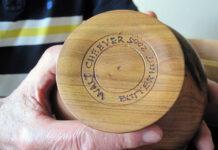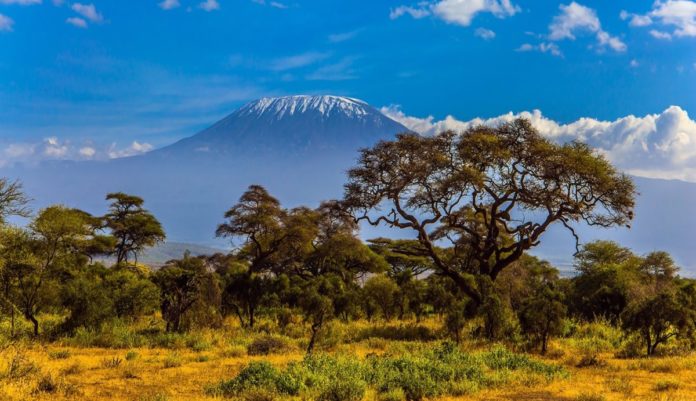
When Mankato resident and outdoor enthusiast Dan Lee started thinking about how he was going to celebrate his 30th birthday this past January, he knew he wanted to do something out-of-the-box. But how he ended up spending his special day was a little more than even he had planned: climbing to the top of Mt. Kilimanjaro.
“I decided that I wanted to give myself a special birthday,” he said. “I started thinking about what to do… and I bought my plane ticket for Africa and decided, ‘That’s what I’m going to do.’ If you’d asked me a year ago, Kilimanjaro definitely wasn’t on my radar.”
Climbing a mountain might not have been on his radar, but an adventure like this wasn’t exactly new to him, either. Thanks to a 55-day trip via stand up paddle board down the Mississippi River in 2017, Lee holds an unofficial world record for the quickest trip down that river by that mode of transportation. And now that he’s summited Africa’s highest peak, he’s already preparing for his next adventure: climbing to the top of Ecuador’s Mt. Cotopaxi, one of the world’s highest volcanoes.
But Lee isn’t just an adrenaline nut—he’s also deeply committed to helping others while he pushes himself. He raised funds for kids’ summer camps during his trip along the Mississippi, and his trip to Africa included raising funds for ROMP (the Range of Motion Project), a nonprofit organization that provides prosthetic care for under-served populations. Lee’s trip to Ecuador will be no different, as he raises funds for the same cause.
“Because I’ve been able to have so many adventures, I always want to give back to anyone else that I can give back to,” Lee said. “ROMP is such a great cause, [and] a cause that should be known about.”
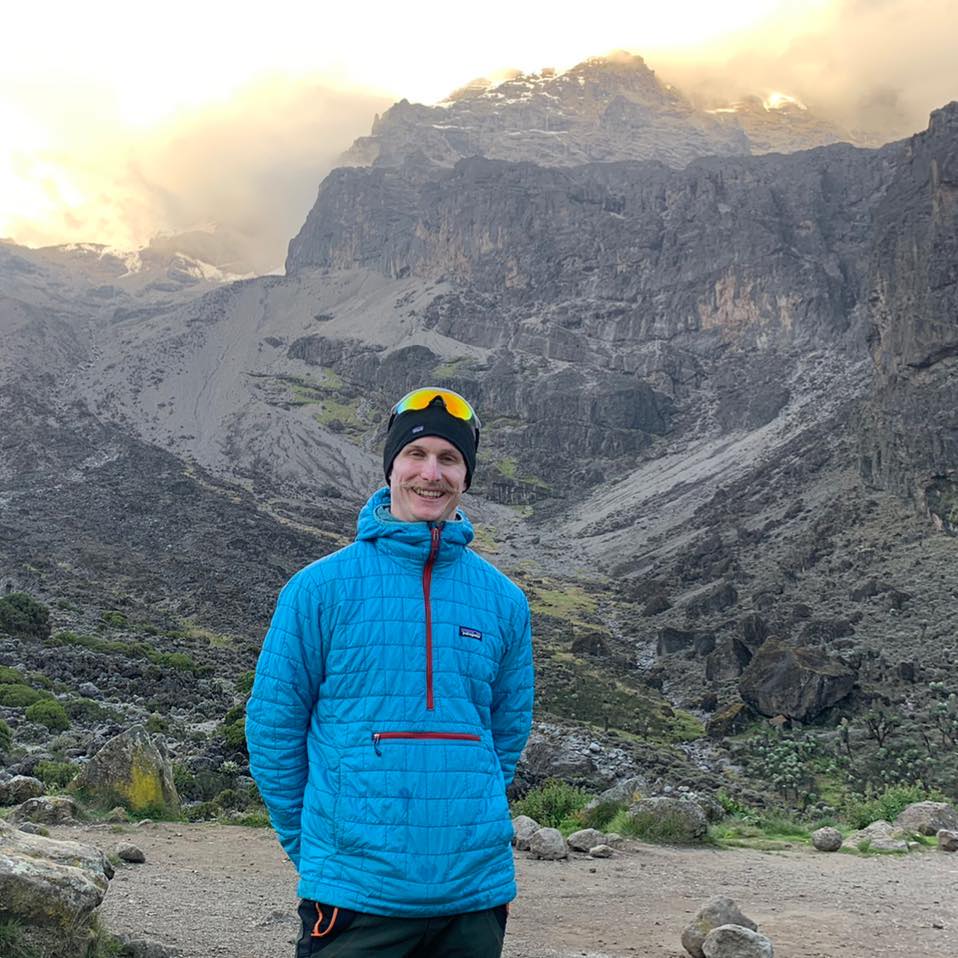
Pushing His Limits
Lee grew up in Mankato and always enjoyed being outside. He spent his summers fishing, canoeing, kayaking and camping out along the river. Then, during college, he discovered paddle boarding while he was working as a guide at Bent River Outfitter, and he got hooked.
Because I’ve been able to have so many adventures, I always want to give back to anyone else that I can give back to.Dan Lee
Lee graduated from MSU Mankato in 2012 with a degree in recreation, parks and leisure services. Following that, he moved to Colorado to work at the National Sports Center for the Disabled. While he was there, he learned of ROMP and began volunteering with the organization. Even when Lee moved back to the area in 2017, he still stayed in contact with ROMP’s director.
Back in Mankato, Lee found a job at Scheels and also continued working at Bent River Outfitter during warmer months. He also started working toward a dream he’d been mulling over for years: paddle boarding the entire length of the Mississippi River.
“The idea to paddle the Mississippi has always been in the back of my head growing up in Minnesota because we are the head waters of the river and surrounded by so many rivers and lakes,” he explained.
Lee decided to tweak his dream to include his new passion for paddle boarding, mapping out an arduous, 2,300-mile journey from Lake Itasca to Port Eads. He planned to start in late August and average 50 miles a day for the next 50 days—which would end up being a world record, if he managed to pull it off.
“I had set in my mind to do it the fastest it’s been done before by a paddle boarder,” he said.
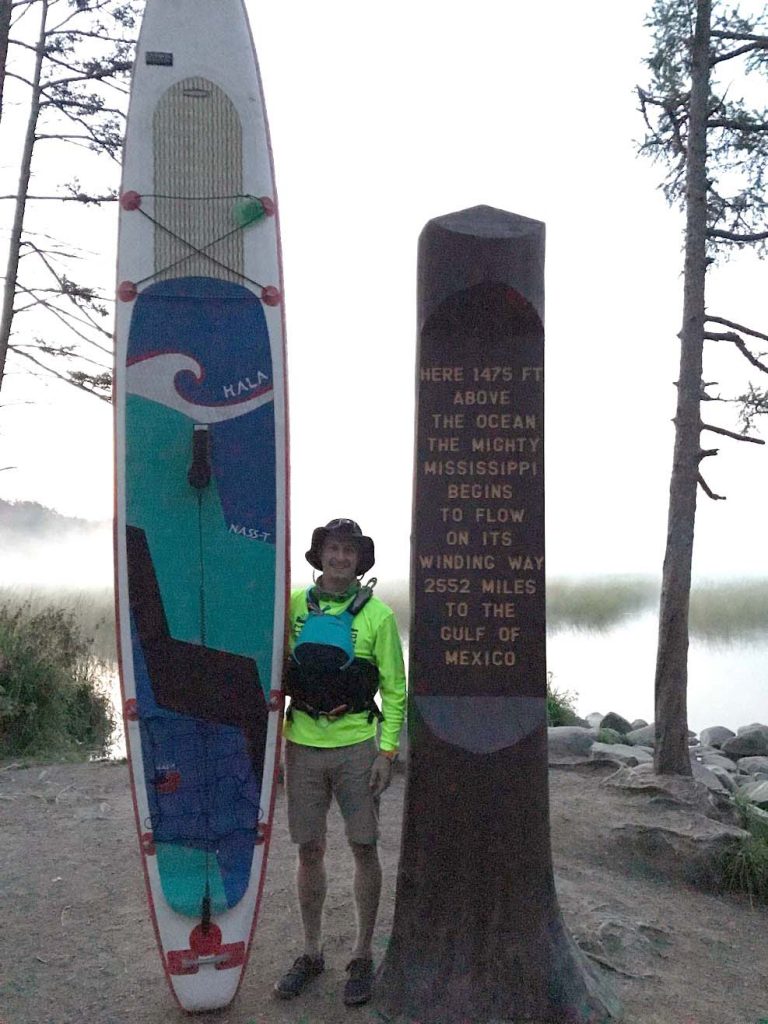
Lee set off on Aug. 31, traveling with camping gear, a hammock and freeze-dried foods, as well as a solar panel to charge batteries and a GPS tracking device. He continually woke at 6 a.m. to paddle for hours, withstanding brutal winds, rainy weather, bugs and heat. He spent most of the nights in his hammock along the way, though other times people would invite him to stay with them at their house or RV, feeding him, doing his laundry and even paying for his campsites.
Lee ended up with a daily average of about 43 miles, which was still quick enough to earn him the world record for fastest trip down the Mississippi on a paddle board. The record isn’t official, since Lee hasn’t sent in all the photos, signatures and GPS tracking required, but for him, that’s not the point. His goal was to push himself farther than he had thought he could go—and to find a way to help others enjoy the beauty of nature too.
[To learn more about Dan’s Mississippi adventure read the story Dan on the Water – ‘SUP Mississippi? here on MankatoLIFE]
That’s why he also worked to raise $6,000 for the American Camp Association, which offers scholarships for kids to attend summer camp. Lee, who worked as a camp counselor for three years, said he wanted to ensure more kids could experience nature.
“I’ve seen the influence on kids that do go to overnight camps,” he said. “They achieve things at camp that they never thought they could do and maybe would not have if they were not given the opportunity until camp provided it for them. I myself achieved things working at a camp for three years that I thought I would have never done before. Being able to give back to a camp that gave so much to me was a great way to repay them for the amazing things camp put in to my life.”
A New Challenge
This year, Lee started thinking about more ways to push himself while also raising funds for a worthy cause. He turned back to ROMP, learning that volunteers go on climbing trips around the world while fundraising for the organization. Climbers choose their own trips and their own fundraising goals.
Lee chose Mt. Kilimanjaro, only organizing his trip about three months in advance. He had experience climbing mountains thanks to his time in Colorado, but he had never climbed anything higher than 15,000 feet (Kilimanjaro is roughly 19,300 feet in elevation). He planned to simply fly over and climb it by himself, but he was eventually joined by his friend, Willy Mekeel.
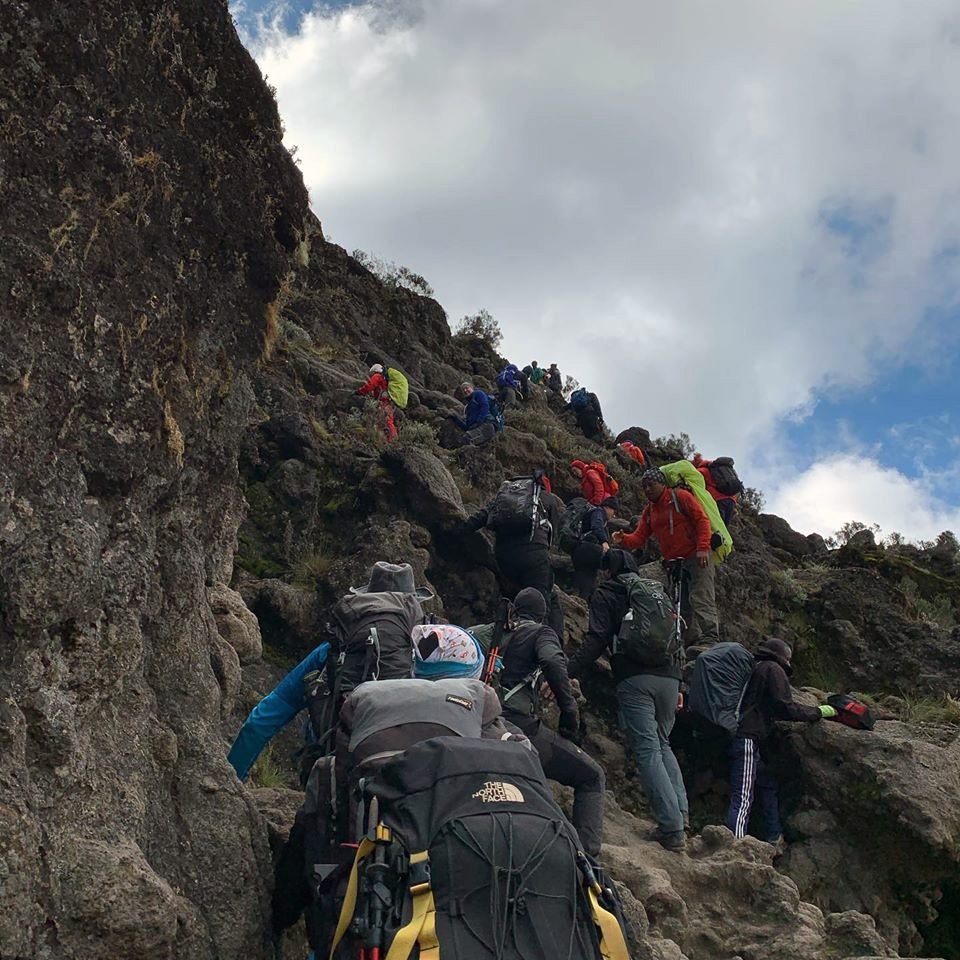
Lee arrived in Tanzania, Africa on January 16 and stayed until Jan. 23. He celebrated his birthday at the mountain’s base camp on Jan. 20 and said the whole climb took about six days (five up and one down). Porters carried most of his supplies, while he carried about 30 pounds of climbing gear, food and extra clothes.
According to Lee, Kilimanjaro is a fairly easy mountain to climb, when it comes to mountains, because of how many people come to climb it every year.
“It wasn’t like this crazy, outlandish mountain,” he said. “So many people climb Kilimanjaro, it’s so touristy… The whole first day, you’re walking a well-maintained path with stairs.”
However, the climb did grow harder as he pushed closer to the top, especially because the air started to thin. At those higher altitudes, humans often don’t feel like eating or drinking as much as usual, but it’s vitally important to stay hydrated and have enough to eat. While Lee said he didn’t feel the effects of the high altitude until the final day, the last 500 feet of climbing was definitely a challenge; he was only able to walk about 50 feet at a time before stopping to catch his breath.
“Every day was working up to being a little harder,” he said. “The first day, you’re going through the jungle, getting used to a different area, new guides… Then you get to camp and they set everything up. Some of our stuff got a little wet after being rained on all day. You eat a snack and go to bed. When you wake up in the morning, you can see hundreds of people round you who are getting to hike and climb the mountain. Then you start climbing, uphill, step after step after step… As long as you go into a trip like that, knowing that you have to be in shape and training, you set yourself up to succeed.”
Lee said the last day of climbing was an all-day affair, starting around midnight. The final hike to the top took about six hours, with Lee reaching the summit around sunrise. Then he hiked all the way back down the mountain, arriving back at the base in the evening.
But all the work was worth it when Lee reached the top.
“When we reached the sign [at the summit], it was just absolute excitement,” he said.
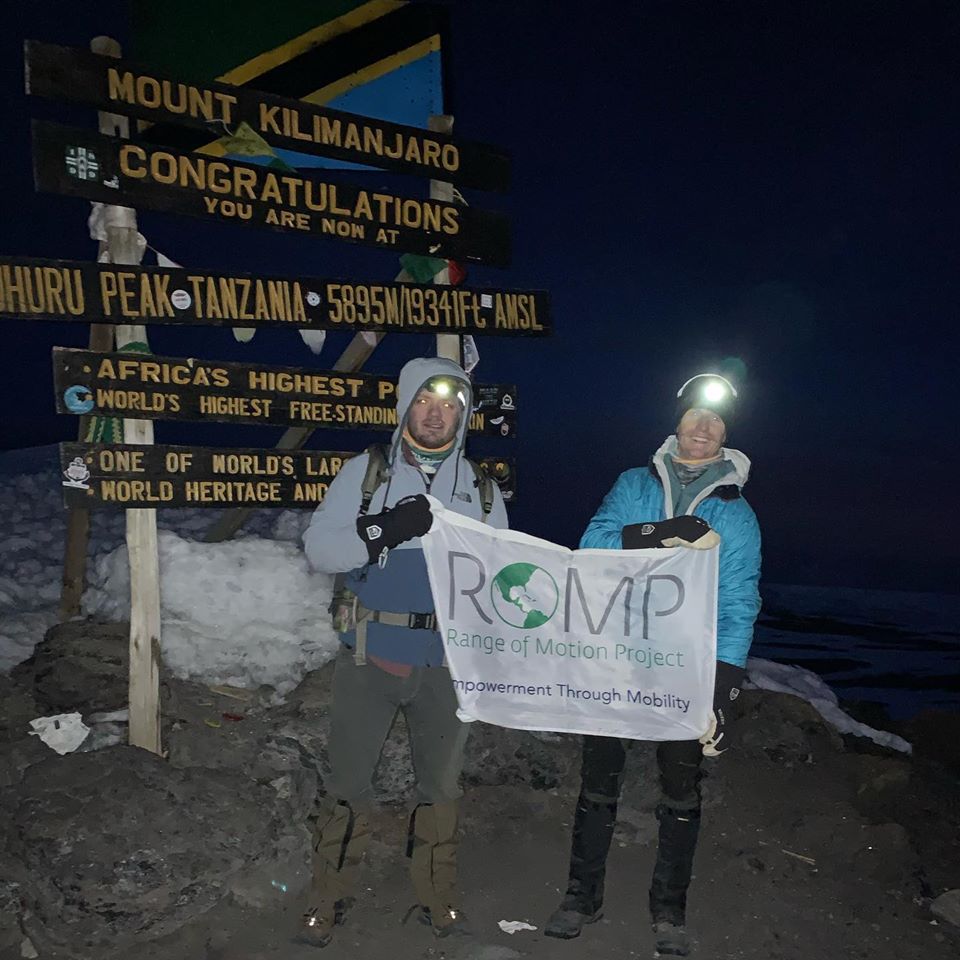
Lee ended up raising $2,000 for ROMP by the end of his trip, thanks to people sponsoring him in the months leading up to the climb. He said the amount wasn’t quite his goal, but he wasn’t too disappointed since he hadn’t had very long to fundraise.
“The hard part is, when you do a trip like that, most people don’t start donating until they see you doing the actual event or situation that you’re fundraising for,” he said.
Another Way to Give
Shortly after Lee completed his fundraiser in Africa, ROMP sent him an email asking him to apply to be on the organization’s 2020 Elite Climb Team. Unlike Lee’s earlier trip, this climbing trip was planned and organized through ROMP, and it involves connecting expert climbers with new climbers who are amputees utilizing prosthetic limbs. These amputees have worked with ROMP to train and prepare for the trip, which will take place in September and include summitting Mt. Cotopaxi, along with two smaller mountains, in Ecuador.
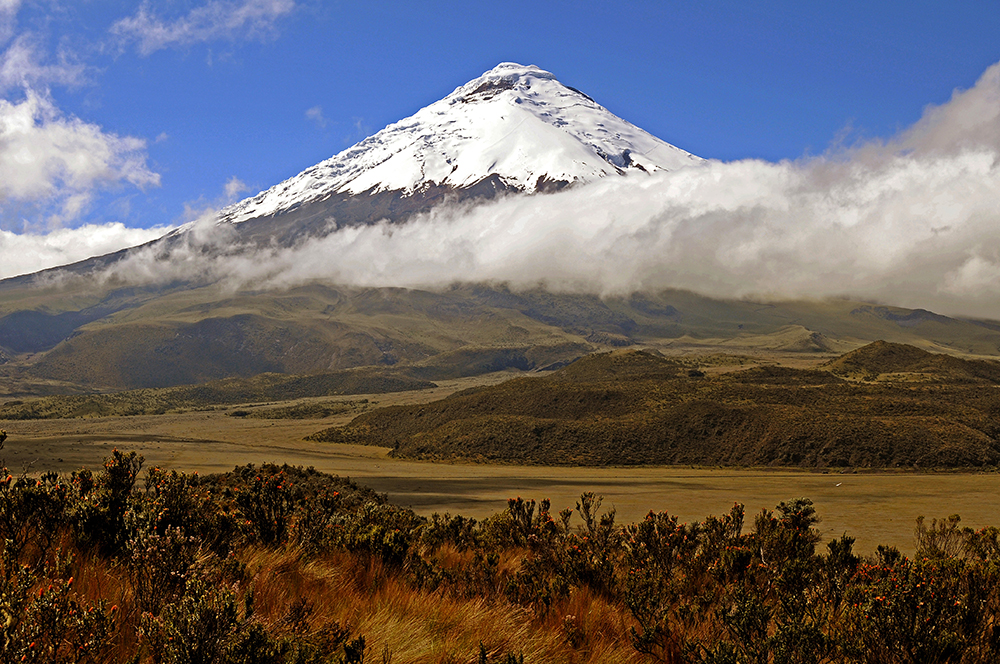
“It’s just getting people that have been through the system of ROMP or have had their struggles, and they take them and help them achieve climbing over a mountain that they maybe never would have had the chance without the help of ROMP,” Lee said.
According to Lee, about 45 people applied to be guides on the elite team, with about 15 chosen—including him. (He just received word of his acceptance in mid-March.) Each team member is paired with an adaptive climber and will act as both a guide and a voice of encouragement.
There’s nothing worse than when you’re doing something hard in life, and you don’t have anyone to give you encouragement.Dan Lee
“We’re not here for us to climb the mountain; we’re there to help other people get to the top of the mountain,” Lee explained. “We’re more there to let them know they can do this. There’s nothing worse than when you’re doing something hard in life, and you don’t have anyone to give you encouragement.”
Lee hasn’t met his adaptive climber yet, and he’s not sure when he will. Right now, he’s just focusing on the six-month workout plan ROMP sent him, with plans to supplement it with his own training plan that served him well before his Kilimanjaro trip—mostly a lot of mountain biking and running.
He’s also trying to raise as many funds as possible before the trip, with a goal of $8,000. ROMP climbers are all required to raise $5,000 for the program, but they’re able to set higher goals if they want.
“If you set your goal for $5,000, and you only reach $4,000, you didn’t reach your goal,” he explained. “If you set your goal for $7,000, and you reach $5,000, you reach your goal.”
Whether or not he makes his goal, though, he’s excited to be part of something worthwhile.
“[We’re here for] other people on their trip,” he said, “to give them the opportunity to achieve something great and prove to people in the world that these people can do whatever they set their minds to.”
Additional Links
Getting to know Dan Lee
- From: Mankato
- Lives in: Mankato
- Day job: Scheels sales representative
- Hobbies: Biking, hiking, playing hockey, curling, running
- Bucket list: “I’ve always wanted to go to base camp at Everest… I just like going on any new adventure, really. You learn so much about yourself and the world and others while doing it. There’s a lot of different places I haven’t been to. I normally let the world decide where I’m going to be going.”
Supporting Dan’s Venture
- To learn more about Lee’s trip, visit his fundraising website.
- More information on the 2020 ROMP Climb.


